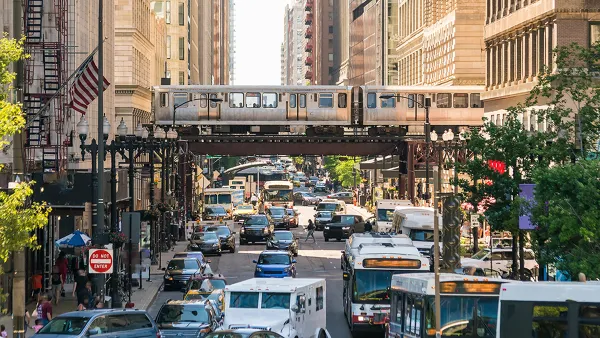In his work developing plans for six new cities in China, Peter Calthorpe has a unique perspective on what the country must do to build sustainable cities to house its growing urban population. He shares his insights with Fortune's Brian Dumaine.
Over the next 25 years, 300 million new residents are expected to fill China's cities. "To put that in perspective," says Dimaine, "Providing housing for that many people is roughly the equivalent of building from scratch all the cities and towns in the U.S. and doing it in only a quarter of a century." To help meet this immense challenge, Calthorpe's firm is assisting in planning several new cities in the country. Based on this experience, and his interactions with officials in the country, Calthorpe discusses how he believes China can find a third way of urban planning that veers from the American precedent of auto-oriented sprawl and the current Chinese model of "high-density sprawl."
Calthorpe sees China's urban history as a guide to its urban future. "As the Chinese create more and more superblocks of apartments and giant shopping centers, they're destroying a whole stratum of their traditional walkable society. The Chinese used to live on the streets in wonderfully social ways, being able to stroll or ride their bikes to cafés and small shops. This creates an affordable, vital urban lifestyle." And he isn't the only one who sees this transition as unsustainable. The nation's leaders, he says, "understand that their current urban forms aren't working." [See Iwan Baan's wonderful photo essay for a sense of the form of a traditional Chinese town]
So what could this third way look like? It will have a lot less cars than current patterns suggest, and a lot less superblocks. Says Calthorpe: "We're going to see a very different China 20 years from now. I think they're at a watershed moment where the old model of superblocks and cars is unsustainable. We'll see cities with auto-free streets, more mass transit, and more bikes. Overall they will be more livable. It's a daunting task, yet the impact will be monumental if we can move the needle even a little."
FULL STORY: Rethinking China's cities

Planetizen Federal Action Tracker
A weekly monitor of how Trump’s orders and actions are impacting planners and planning in America.

Chicago’s Ghost Rails
Just beneath the surface of the modern city lie the remnants of its expansive early 20th-century streetcar system.

Amtrak Cutting Jobs, Funding to High-Speed Rail
The agency plans to cut 10 percent of its workforce and has confirmed it will not fund new high-speed rail projects.

Ohio Forces Data Centers to Prepay for Power
Utilities are calling on states to hold data center operators responsible for new energy demands to prevent leaving consumers on the hook for their bills.

MARTA CEO Steps Down Amid Citizenship Concerns
MARTA’s board announced Thursday that its chief, who is from Canada, is resigning due to questions about his immigration status.

Silicon Valley ‘Bike Superhighway’ Awarded $14M State Grant
A Caltrans grant brings the 10-mile Central Bikeway project connecting Santa Clara and East San Jose closer to fruition.
Urban Design for Planners 1: Software Tools
This six-course series explores essential urban design concepts using open source software and equips planners with the tools they need to participate fully in the urban design process.
Planning for Universal Design
Learn the tools for implementing Universal Design in planning regulations.
Caltrans
City of Fort Worth
Mpact (founded as Rail~Volution)
City of Camden Redevelopment Agency
City of Astoria
City of Portland
City of Laramie





























